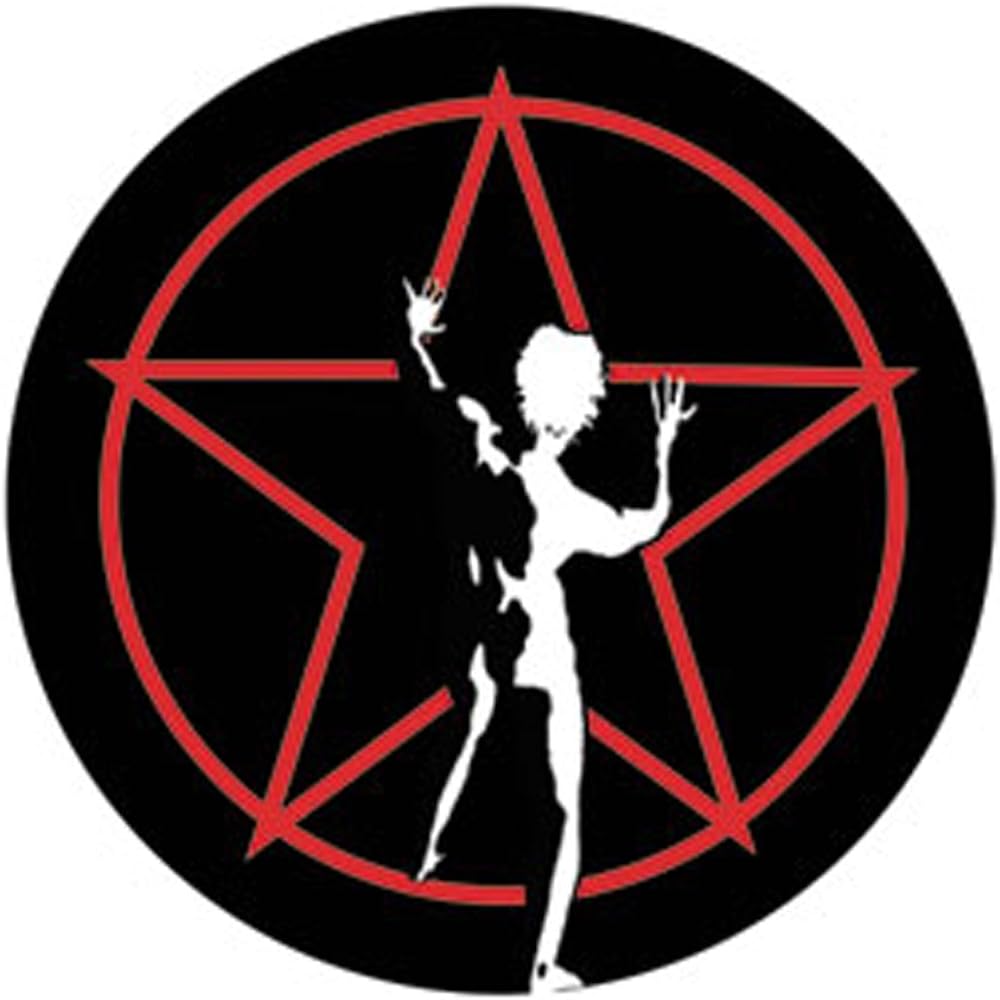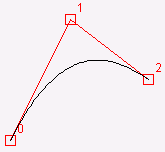There are several people in the comments saying they have to use 27 Feb 2013 because they work with people all over the world. I’m really confused - what does that solve that 2013-02-13 does not? I know that not every language spells months the English way so “Dec” or “May” aren’t universal. Is there some country that regularly puts year day month that would break using ISO 8601 or RFC 3339?
When someone asks you what date it is, no one says it’s 2025 May 5th. We all know what year it is, and we all know what month we are in. It’s the day component that is usually the unknown.
Writing dates is usually in order to keep track for the future, when the year and month may be different.
we all know what month we are in
Literally had two coworkers today that did not realize it was May
Guilty of that myself this very day. I did it a very spectacular way too. Some coworkers came up to me and said “man, April was a busy month for you!” I boldly replied “and it ain’t even over yet!” I was promptly corrected.
Oh, yeah, guess it is.
That’s locality of reference, though, similar to how you can say “here” or “there” for spatial coordinates. Everybody is aware of the year and month, so you omit it as given. The order of significance is still year, month, day.
Imagine if a harried time traveler jumped out of their time machine and asked you the date. Would it make sense to say, “Why, it’s the 1st.” (Or more possible, if a friend awoke from a coma.) If you ask somebody when they were born, most people will give the year at minimum. Of course, there are some weirdos out there, and you recognize them when you ask when they were born, and they say, “on a Tuesday.” Same for the date of the Norman invasion of Great Britain. If you don’t already have some sense of history, then knowing it happened about the 20th isn’t very edifying.
27 Feb 2013 is unambiguous- regardless of where you’re from or how you write your dates, you can’t confuse 2013 for the month or day, you can’t confuse Feb for a day or week, and if you can’t figure 27 out, then we have bigger problems!
27 Feb is no more or less ambiguous than 02-27. The problems are when you choose a proper example, like 03/02
Which I was the justification used when my work decided to use 2025-May-01.
It’s close enough to the iso date that nobody will be confused but with that 1 extra layer of security blanket to separate months and days.
Of course, that does ruin sorting, so I think it was a bit silly, nobody has ever used yyyymmdd so it’s all a bit theoretical to me.
I used to work for a company that agreed with you, well at least some clown in management did. Even though it was an Australian company, at least part of the problem was we had an office in Manila, and they speak “American English” which seemed to include the awful date system too. We dealt with a lot of files being issued to clients / received from vendors etc. Because the “official” system used those fucked up dates, everyone ran their own secondary sets of data folders in / out with everything done in ISO dates so you could actually sort it properly.
2013-02-27 is also unambiguous unless you’re aware of a country that uses year day month, is not?
2013-02-27 is also unambiguous.
Hey what’s today’s date?
It’s 2025 -
No like the DAY?
Yeah, it’s 2025, 02 -
Not the month, the day - What’s today’s actual date?
Like I was saying, if you’d let me finish, “2025 - 02 - 27”
I’m mostly joking, but when it comes to info about dates, I think the most evctive format it one that organizes the information within a heirachy that provides follow up answers.
Formatting dates as day / month / year does just that. Provides the day it is, followed by the month and year as that is the order that information is usually needed in.
I find providing the year first (or month) is much more ambiguous as neither are the day the actual date falls on.
Counterpoint: What you say applies in daily life, not when querying an archive of any kind. Year-month-day is the natural sorting order if the question is “which file/folder/column in the spreadsheet is the one I need?” In which case you narrow it down to first the year, then the month, then the day.
I started using YYYY-MM-DD to name files and directories once I noticed that they then became automatically sorted chronologically when I sort the containing directory alphabetically by file name.
Time travelers would have to endure a few less awkward moments though.
If you need to ask for the current date so often, I suggest getting a watch. (not sure if joking vs predisposed for this part)
If you’re asking so often about recent things then, yes, hearing the redundant parts out loud is only irksome because they’ve already been delivered to you (by yourself).
On the other hand, if you’re asking someone when an arbitrary event happened (e.g. when reminiscing), having the year first quickens context.
Wow, what a relatable use-case…
I was said that western mindset goes from small scale to larger scale, like 02-05-2025. Hmm, maybe that’s West vs East propaganda material?
We need to get rid of the month/day and just refer to days by number. Today is day 121 in the year 2025, it’s super clear.
Why bother with years, it’s day 1,456,7834
That’s an interesting epoch. Almost, but not quite, 40,000 years ago
2013-02-03 though. Someone would fuck it up
It solves the familiarity problem, when getting somebody to do something by a date they readily understand at a glance takes precedence over making everybody in the world change a lifelong habit.
I think learning all abbreviations for different months in different languages is more complicated than just learning that the time is sorted from largest to smallest unit.
No! It’s the other way around, from largest to smallest is a mess and it makes no sense
If you name files or other data with ISO 8601 then they’re always sorted chronologically when you go largest to smallest.
So true, bestie! That’s why all the clocks in my house are formatted ss:mm:hh
I know, right! I’ve been campaigning for this for everyday numbers. For example, twenty seven should be written smallest first: 72. Likewise this year is 5202, and next year 6202. That way no-one’s going to be confused at all.
What you said is stupid
Everyone should use date-time groups so we’re all on the same page down to the second.
DDHHMMSSZmmmYY
%Y%m%dT%H%M%SZ
Feb 27th 2013
Boom. Everything is in a different format so you can order it however you want and it’s still readable.
Why use abbreviations in your preferred language when you can have a solution that is language-agnostic and universal (for a given calendar) ?
Because if there’s one problem simple enough that I trust an LLM or translation app not to fuck up, it’s simple translation of month labels from on language to another. If you’re writing in English, it’s reasonable to have month abbreviations in English. If someone wants to read it in a different language, they’re going to have to use translation software or hire a human translator to do it. And regardless of translation method, simple date translation will be among the most reliable and faithfully translated parts.
Or, you know, just use plain old numerals that almost everyone on earth can read and understand without needing a translation in the first place. Why the fuck do people need to bring LLMs where it’s not needed ? Is it to pump their NVDA stocks?
5/1/2025. I’ll die on this hill.
m/d/y, so wrong by default
5/1/5 ?
Oh please. What’s next? A twelve hour time system with am and pm? Measuring distances in thumbs and other body parts?
Worse: measuring temperatures based on what one guy felt was the coldest it could get in the winter and the hottest his fever would reach.
Don’t be ridiculous, that’s just insane.
To be fair, “thumb” was only a unit in determinating what stick we could beat our wives with.
The 5th January 2025, correct.
I’ll see you in hell.
I’ll call the coroner.
Fifth January 2025?
Imagine a database, or even a folder with multiple years in it. “Payroll_05-01-2025”. Now all your files are sorted by month. You would have to scroll through “Payroll_05-08-1988”… etc forever before you reach 2025. And when you do, all of 2025 isn’t together. ISO 8601 solves these issues automatically. It’s time to adapt to a better system…
The sane way of dealing with it is to use UTC everywhere internally and push local time and local formatting up to the user facing bits. And if you move time around as a string (e.g. JSON) then use ISO 8601 since most languages have time / cron APIs that can process it. Often doesn’t happen that way though…
This is what I try to do in the few apps I’ve written that had to deal with dates and times
Definitely. If your servers aren’t using UTC, then when you’re trying to sync data between different timezones, you’re making it harder for yourself.
The BEST way is to use the number of seconds after the J2000 epoch (The Gregorian date January 1, 2000, at 12:00 Terrestrial Time)
ISO 8601 goes from 1582 (Julian calendar adoption) but can go even further with agreement about intention and goes down beyond the millisecond. Not sure why I want an integer from the year 2000 which only represents seconds.
Simplicity and precision.
Who said it was only measured as an integer? Seconds are a decimal value and many timekeeping applications require higher precision than to the millisecond. Referencing an epoch closer to our current time allows greater precision with a single double-precision floating point number.
Want to reference something before J2000? Use a negative number.
It’s independent of earth rotation, so no need to consider leap second updates either unless you are converting to UTC. It’s an absolute measure of time elapsed.
Generally yes, that’s the way to do it, but there are plenty of times where you need to recreate the time zone something was created for, which means additionally storing the time zone information.
This standard would have probably caught on if they wouldn’t have gone and made it backwards.
Objectively you are more likely to need to know the day first, then the month then the year, and when people get lazy they always just leave off the year because it is assumed, but if the year is first you have to say the whole thing or sound stupid.
In daily speech you’re correct, but the ISO standard isn’t meant for daily speech. It’s meant for timestamps and archives that can be queried in a systematic manner. In that case, the natural ordering is to narrow down the search by year-month-day.
Depends on the purpose. For documents (especially those on which people work collaboratively over long periods of time) I find YYYY-MM-DD ideal. It spares the issues around day or month first when Europeans and people from the US work together, the document are easy to sort and, if it takes more than a year to complete the project (as is often the case in research) things don’t get messy.
Run a business? Infuriate and baffle your accountants by insisting to do all business and keep all records according to a lunar calendar.
Yeah that’s more human-readable, but not easily sortable.
That format near the cat’s tail should have used hue to differentiate year/month/day…
ISO 8601 allows all kinds of crazy time stamps. RFC 3339 is much nicer and simpler, and the sweet spot is at the intersection of ISO 8601 and RFC 3339.
Then again, ISO 8601 contains some nice things that RFC 3339 does not, like ranges and durations, recurrences…
Issue: there are 27 different ways of writing a date.
Engineers: We most make a common standard that is unambiguous, easy to understand and can replace all of these.
Issue: there are 28 different ways of writing a date.
Joke aside, I really think the iso standard for dates is the superior one!
Rich is right, since this is the date format that sorts correctly in filenames.
Omg thank you!! Everyone sees my notes thinks I’m crazy for obsessing… It’s the correct fucking sort!
Won’t be true after 9999-12-31, however.
Can be solved with a small shellscript adding a leading zero to all filenames with the format.
If humanity survives until then, we can implement 9-digit dates and delay the problem until Y100K.
If I, my software, or my data last this long, I will have nearly 8000 years to resolve it. Which is to say, the year 9998 is going to get busy.
I’d be curious to see a sorting algorithm that doesn’t handle YYYYY-MM-DD with YYYY-MM-DD properly. If you drop the dashes you still get a proper numeric order. If you sort by component, you still get the proper order. Maybe a string sort wouldn’t? Off the top of my head the languages I’m thinking either put longer strings later, giving us the proper order, or could put 1YYYY- ahead of 1YYY-M so maybe string sorting is the only one that’s out.
Lexical sorting (string sorting/alphabetical order sorting) is what I believe they were referring to when talking about file names.
The fact that you don’t have to do any parsing of the string at all, just do a straight character-by-character alphabetical sort, and they will be sorted by date, is a great benifit of this date scheme. That means in situations where no special parsing is set up (eg, in a File Explorer windows showing a folders contents sorted alphabetically) or where your string isn’t strictly date only (eg, a file name format such as ‘2025-05-02 - Project 3.pdf’) you can still have everything sorted by date just by sorting alphabetically.
Its this benifit that is lost when rolling over to 5-digit years.
I bet you could make a one liner to rename files with YYYY-MM-DD to 0YYYY-MM-DD fairly easily. Not a problem.
It’s an easy fix at least, just check if you’re comparing numbers on both sides and switch to a simple numerical sort.
I think Windows used to get this wrong, but it was fixed so long ago that I’m not even sure now.
natural sort ftw
Oh no! The Y10K bug!
Can’t wait for the Y40k bug, when Tyranids begin to infect our brains.
Bold of you to assume there isn’t already a genestealer cult on Terra. Washington specifically.
That…would explain a lot
Who’s Rich? Did you mean Randall?
…dammit, the only comics I read are XKCD and OOTS and I done fucked up.
How can you sleep on Oglaf
Banished to back in time to hang with Ozy and Millie
The good ones tend to filter their way out.
(I do also read whatever John Allison is currently working on.)
And it is easily extensible to YYYY-MM-DDThh:mm:ss to include the time of day
Are you an obsidian user?
I feel called out and I’m hiding in the bushes reading comments.
It’s called feeling seen and finding you’re not alone. Do you type "# " while screen sharing in work apps to no avail and the chagrin of colleagues? It’s okay. Me too.
Haha yep, you caught me. I’m a fan of the unique note feature
I’ve never met a fellow Templatr in the wild lol
My daily note broke and my life fell apart for a minute.
Have you also spent months building your Data Capture Workflow mermaid.js? 😅😬
Not quite months, but definitely weeks 😂 Obsidian can be such a rabbit hole. If I tweak that last template one more time, then I’ll finally be done, I swear!
So I’m like 80% done with my setup. Mostly focused on routine and habit templates, homepage wiki for pkm etc… between the plugins and css, no matter which device I’m on, it’s the slowest app I’ve ever used. This is why I pushed my old setup and started over clean with more knowledge. I don’t know how to get the customization I want without insane unusable lag
I’m not a computer and this isn’t work so I’m gonna just use my confusing date format.
Working for a global clinical research company, DD-Mmm-YYYY is the easiest for everyone to understand and be on the same page. It’s bad enough identifying which date you’re capturing in metadata without also trying to juggle multiple date formats.
I work at a global company an in my team there are people from 5 continents. we use 27-Feb-23. It’s the only way nobody gets confused and it’s only 1 char more. (Tbf nobody would be confused only my boss that is american lol)
Are you planning stuff 2 years ahead already?
I would still be confused by this…
Only if you’re american.
I am not. Swede.
Is that February 27th 2023 or February 23rd 2027?
guys its Dd Mmm Yy, like any sane non american person
You can even save a character by using NATO dates (leaving out the useless hyphens): 01DEC1953
thats not bad! I’ll introduce this option
Upset we didn’t get a “Half a score, two years, two months, and four days ago…”
In the last company I work for, the department was created from zero, and my boss just let me take all the technical decisions so from the begging everything was wrote in ISO-8601. When I left it was just the way it was, if you try to use any other date format anywhere something is going to give you an error.























